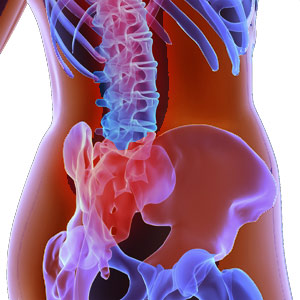Abnormal Pap Smear

A pap smear enables the doctor to look at the cells from the cervix which is the lower part of the womb. In women, a thin layer of tissue which is composed of cells covers the cervix. Chances are that the cells at the bottom layer moves to the surface of the cervix as they develop.
During such cellular movements, there is a possibility of the cervix cells to become abnormal due to damage. As this occurs, it necessitates that the abnormal cells are removed to prevent cervical cancer from developing.
What is an abnormal pap smear?
When the Pap smear reveals the damaged cervix with the cells having undergone abnormal changes, it is an abnormal Pap smear. In some cases, abnormal cells that are detected through Pap smear may become cancerous. However, an abnormal Pap smear result does not necessarily mean cervical cancer. In fact, having a regular Pap smear test significantly reduces the chance that cervical cancer will ever develop.
Common reasons for abnormal Pap smear
Infection
- Trichomonas vaginalis
- Fungal organisms
- Predominance of coccobacilli consistent with shift in a vaginal flora
- Bacterial vaginosis - Actinomyces
- Cellular changes associated with herpes simplex virus
Reactive cellular changes can be associated with
- Inflammation
- Atrophy with inflammation
- Radiation
- Intrauterine contraceptive device
Epithelial Cell abnormalities
- Atypical squamous cells of undetermined significance
- Low grade squamous intraepithelial lesion encompassing HPV
- High grade squamous intraepithelial lesion encompassing moderate and severe dysplasia.
- Squamous cell carcinoma
Glandular cells
- Endometrial cells, cytologically benign, in a postmenopausal woman
- Atypical glandular cells of undetermined significance
- Endometrial adenocarcinoma
- Extrauterine adenocarcinoma
- Adenocarcinoma
- Other malignant neoplasms
What abnormal Pap smear result could mean?
Bethesda System is the most commonly used system for describing Pap smear test results. This system uses a number of terms to relate to the results. One is squamous intraepithelial lesion which describes precancerous changes in the cells of the cervix. These squamous intraepithelial cells are irregularly shaped and flat cells.
An abnormal Pap smear test could indicate any of the following:
Cervical dysplasia: Sometimes, cervical dysplasia or cervical intraepithelial neoplasia (CIN) can be indicated by the abnormal cells of the cervix in a Pap smear. These are precancerous stages. Such changes in the Pap smear will be graded as CIN 1 which is mild, CIN 2 which is moderate, and CIN 3 which means severe. While CIN 1 often subsides on its own and does not require any treatment, CIN 2 and CIN 3 require further evaluation and treatment as these are more serious.
Atypical Squamous cells: ASC is another possible result of abnormal Pap smear. ASC can be f 2 types - ASC US could mean 'uncertain significant,' that is changes are not serious and may be caused by a vaginal infection or an infection with a virus called HPV - human papillomavirus. In such cases, the doctor may want the Pap smear to be repeated.
ASC H means possibility of HSIL where some of the cells are not cancerous but may be precancerous. Your doctor may want to perform a colposcopy which allows a closer examination of the cervix.
AGC refers to atypical glandular cells. These are cells that produce mucus and are located in the cervix or uterus. This result indicates that the glandular cells are not normal and that the changes are usually more serious. Women with AGC exhibit higher risk for cervical cancer. The doctor may suggest a colposcopy to examine any irregular tissue.
LSIL stands for low squamous intraepithelial lesion. There are some early changes in the size and shape of the cells. LSIL are normally associated with HPV and these can cause genital warts. In such cases, the doctor asks for a repeat Pap smear or would perform colposcopy.
HPV refers to a common type of sexually transmitted disease. Women who are younger than twenty years of age face the risk of contracting HPV than older women. In most cases, the immune system which attacks HPV also allows the infection to heal itself. But in a small section of women, HPV may not heal by itself and they will develop CIN. Women who smoke face twice the risk of developing CIN with HPV than the ones who do not smoke.
HSIL means high-grade squamous intraepithelial lesion. This means the cells in the cervix are very different from normal ones. These cells are usually precancerous and likely to lead to cancer of the cervix.
If extremely abnormal cells are reported in the Pap smear, it is indicative of cancer cells in the vagina, cervix and uterus. The doctor usually performs additional testing and then discusses the various possible treatment options.
- If any inflammation persists in the cells on the Pap smear, this could mean that blood cells are seen in the smear. Inflammation of the cervix is not unusual, and only if the inflammation is severe, the doctor may want to find the cause of such an infection. A repeat Pap smear is recommended to check if the inflammation has improved or cleared up completely.
- Hyperkeratosis indicates finding of dried skin cells on the Pap smear. This kind of change in cells can occur due to a cervical infection, or due to using a cervical cap or diaphragm. The doctor follows up hyperkeratosis by a repeat Pap smear in 6 months and if it is still present on the Pap smear, the doctor may wish to perform a colposcopy.
What are the follow up tests if Pap smear is abnormal?
If the Pap smear shows abnormal results, then the doctor probably may repeat the Pap test. If there are serious changes in the cells of the cervix, the doctor could suggest more powerful tests. These results could help the doctor to decide on the treatment options. Such follow up tests include:
- Colposcopy, is a tool used by the doctor to see if the cells of the vagina and cervix in detail.
- Endocervical curettage, when a doctor takes samples of cells from the endocervical canal with a small spoon shaped tool called curette.
- Biopsy, wherein the doctor removes small sample of cervical tissue and the sample is sent to a lab for study under a microscope.
What is colposcopy?
This procedure enables the doctor to examine the cervix more closely if there are any abnormal cells. The cervix is normally coated with vinegar solution which can cause any abnormal area to turn white. Then the doctor examines these areas using a colposcope which resembles a microscope. A small piece of tissue is removed for testing in a laboratory.
As such, the colposcopy is painless. However, if the doctor needs a biopsy of an abnormal area, there may be some bleeding and pain involved. During a cervical biopsy, the doctor removes a small amount of cervical tissue for laboratory evaluation. Endocervical sampling uses a small brush to remove the amount of tissue from the cervical canal. This kind of sampling is utilized in women who exhibit ACG Pap smear result.
Cervical dysplasia
During a Pap test, the results may reveal certain changes in the cells of the cervix. This is called cervical dysplasia. This is a medical term for pre-cancer stage. HPV causes abnormal smears in huge majority of women. Other terms that suggest the same as dysplasia include:
- Abnormal cell changes
- Precancerous cell changes
- Cervical intraepithelial neoplasia
- Squamous intraepithelial lesions
- Warts on the cervix
There are many types of HPV which may cause dysplasia. Not all the types, though many, are considered high risk types and they are linked to cervical cancer.
Causes that increase cervical dysplasia
In most cases, cervical dysplasia occurs in women between 25 to 35 years of age, although there are possibilities that this could develop at any age. Following are some of the leading causes that could increase cervical dysplasia:
- Being sexually active before the age of 18
- Giving birth before the age of 16
- Having sex with multiple partners
- Presence of other illnesses
- Using medications that can suppress the immune system
- Smoking
Cervical dysplasia usually does not have any symptoms.
- But just because one has cervical dysplasia does not necessarily mean one has cervical cancer. It only indicates that the doctor must closely monitor the cervix.
- It could also mean that treatment options should be considered to prevent further cell damage and that could become cancerous if left unchecked over a period of time.
- Cervical cancer does not grow overnight. It progresses slowly. Screening on a regular basis is very important. Such screening could catch any potential problems before they progress. It would normally take 10 years or even longer for cervical dysplasia to turn into cancer.
Treatment options cervical dysplasia
Early diagnosis and prompt treatment could nearly cure all cases of cervical dysplasia. Without treatment, 30 to 50% of such cases may lead to invasive cancer. The risk however is lower in mild dysplasia. Treatment for moderate to severe dysplasia that does not go away includes:
LEEP or loop electrosurgical excision procedure in which an electric current running through a thin wire loop to remove abnormal areas of the cervix. In most cases, the doctor does it in his office.
The name cone biopsy refers to the shape of the sample wedge removed from the cervix. This is normally performed in a hospital and she can return home the same day.
Cryotherapy freezes the abnormal tissue allowing it to shed later. The doctor does it in his/her office itself.
If laser treatment option is chosen, the doctor radiates a laser beam of light to shine on the abnormal tissue, thereby destroying the tissue.
The side effects and risks associated with the type of treatment for cervical dysplasia is discussed by the doctor before treatment begins. There are chances that this treatment may affect future pregnancies.
Treatment for abnormal Pap smears could also result in heavy bleeding and sometimes a watery vaginal discharge. Very rarely does a doctor recommend hysterectomy. Women with dysplasia need to constantly follow up, once in three to six months or as recommended by the doctor.
Top of the Page: Abnormal Pap Smear
Tags:#abnormal pap smear #abnormal pap smear colposcopy #abnormal pap smear dysplasia #abnormal pap smear causes #reasons for abnormal pap smear #pap smear result.

Enlarged Uterus
Bacterial Vaginosis
Yeast Infection
Irregular Menstrual Cycle
PMS - Menstruation
Dysmenorrhea
Hypomenorrhea
Mid Cycle Bleeding
Pelvic Organ Prolapse
Vaginal Atrophy
Cervix Cancer
Abnormal Pap Smear
Polycystic Ovarian Syndrome
Ovulation Pain
Uterine Prolapse
Fibroid Tumor
Menorrhagia
Endometriosis Symptom
Galactorrhea
Hysterectomy
Blocked Fallopian Tubes
Menopause and Weight Gain
Premature Menopause
Surgical Menopause
Other health topics in TargetWoman Women Health section:
General Women Health

Women Health Tips - Women Health - key to understanding your health ...
Cardiac Care
Women's Heart Attack Symptoms - Identify heart problems...
Skin Diseases
Stress Hives - Red itchy spots ...
Women Disorders
Endocrine Disorder - Play a key role in overall wellbeing ...
Women's Reproductive Health
Testosterone Cream for Women - Hormone replacement option ...
Pregnancy
Pregnancy - Regulate your lifestyle to accommodate the needs of pregnancy ...
Head and Face
Sinus Infection - Nearly 1 of every 7 Americans suffer from ....
Women and Bone Care

Slipped Disc - Prevent injury, reduce pain ...
Menstrual Disorders
Enlarged Uterus - Uterus larger than normal size ...
Female Urinary Problems
Bladder Problems in Women - Treatable and curable ...
Gastrointestinal Disorders
Causes of Stomach Ulcers - Burning feeling in the gut ...
Respiratory Disorders
Lung function Test - How well do you breathe ...
Sleep Management

Insomnia and Weight Gain - Sleep it off ...
Psychological Disorders in Women
Mood swings and women - Not going crazy ...
Supplements for Women
Women's Vitamins - Wellness needs...
Natural Remedies

Natural Diuretic - Flush out toxins ...
Alternative Therapy
Acupuncture Point - Feel the pins and needles ...
Top of the Page: Abnormal Pap Smear
Popularity Index: 101,859

